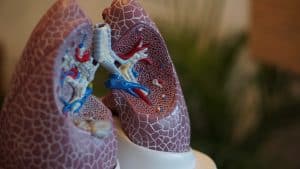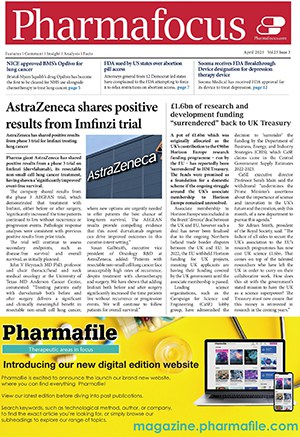
Hong Kong Baptist University researchers develop drug for EBV-associated cancers
pharmafile | March 4, 2021 | News story | | Cancer, Epstein-barr virus, Hong Kong
Researchers at Hong Kong Baptist University have developed a novel drug with the potential to become a next-generation treatment for cancers associated with Epstein–Barr virus (EBV).
EBV is one of the most common viruses in humans, having infected more than 90% of the human population worldwide. It is widely known that the virus plays a key role in several cancers such as nasopharyngeal carcinoma, which is highly prevalent in Hong Kong and southern China.
The peptide-linked drug, which is responsive to the acidic environment found in tumours, is the first known agent to have successfully targeted two viral proteins that are simultaneously produced by EBV.
According to findings published in the international academic journal Advanced Science, the drug also offers a new strategy by increasing the uptake of anti-cancer drugs in tumour cells, thus allowing the application of lower drug dosages which helps reduce treatment side effects and health risks.
The study was led by Professor Gary Wong Ka-Leung, Professor and Head of the Department of Chemistry at HKBU, Dr Lung Hong Lok, Assistant Professor of the Department of Chemistry at HKBU, and Dr Law Ga-lai, Associate Professor of the Department of Applied Biology and Chemical Technology at The Hong Kong Polytechnic University.
The research team constructed a novel drug with a peptide that can target two EBV-specific viral proteins – latent membrane protein 1 (LMP1) and Epstein–Barr nuclear antigen 1 (EBNA1), are the viral proteins which are expressed in all EBV-infected tumour cells, and both play a vital role in the development and progression of EBV-associated tumours.
The dual-targeting drug employs two treatment mechanisms: targeting and binding to EBNA1, making it no longer functional, and inhibiting LMP1 and serving as an imaging agent. As LMP1 is more accessible to drug targeting due to its presence on the surface of cells, the ability of the new drug to selectively identify EBV-infected cancer cells is largely enhanced.
Researchers also engineered the drug to have excellent sensitivity to acidic environments, so that when the drug binds to a tumour cell, its peptide will cleave and be released in response to the acidic tumour microenvironment. It then enters the nucleus of the tumour cell and hinders the function of EBNA1.
Normal cells have a neutral environment, while cancer cells usually thrive in an acidic environment, meaning unintended damage to normal cells can be reduced with this treatment.
Professor Wong commented: “The experimental results are good indicators that prove the drug’s efficacy and safety.
“Since this is the first example of simultaneous imaging and inhibition of two EBV viral proteins, it can serve as a blueprint for a next-generation drug for the safe monitoring and treatment of a specific cancer.”
Darcy Jimenez
Related Content

Geneos Therapeutics shares data from phase 1/2 trial for cancer vaccine
Geneos Therapeutics has announced that it has published positive safety, immunogenicity and efficacy data from …

Curve Therapeutics’ CSO publishes research on HIF inhibition for cancer treatment
Curve Therapeutics has announced that its chief scientific officer, Professor Ali Tavassoli has published research …

Verastem Oncology gains Fast Track Designation for combination NSCLC treatment
Verastem Oncology has announced that the US Food and Drug Administration (FDA) has granted Fast …








